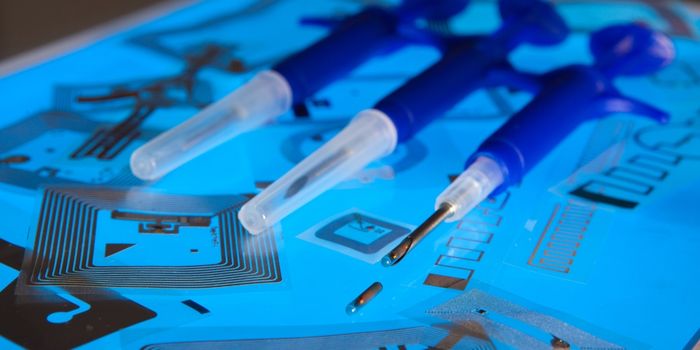Buying RFID tags is confusing for beginners. You’ll hear lots of jargon that can make your head RFID Inlays, tag types, form factors, frequency… where do you even start?
This guide takes the mystery out of buying RFID tags by walking you through the basics of RFID technology and giving concrete recommendations for what kinds of RFID tags to buy for different purposes.
What is an RFID Tag?
An RFID tag is any item that contains an RFID chip and an antenna. The chip stores information about the item, and the antenna transmits that information to an RFID reader.
They come in different forms, with the common ones being RFID keyfobs, RFID cards, RFID wristbands, and RFID labels. Your choice of form factor will depend on how you plan to use the RFID tag.
For example, wet RFID inlays contain an adhesive backing, making them ideal for sticking on assets. On the other hand, RFID epoxy tags are designed to be permanently affixed to high-value items. They are hardy and work optimally even in rugged environments.
Any RFID tag consists of 3 critical parts, including:
- RFID Chip. This is the brain of the tag, storing all the information about the item. It contains a memory chip and a microprocessor. The user memory size of the microchip varies, with common sizes being 128-bits, 256-bits, and 512-bits.
- RFID Antenna. This part of the tag is responsible for receiving and transmitting signals to and from the RFID reader. It acts as a link between the microchip and the outside world. The size and shape of the antenna will vary depending on the form factor and frequency of the tag.
- Substrate or Housings. This is the part of the tag that protects the RFID chip and antenna. It can be made from different materials, such as PVC, PET, ABS, or epoxy.
When buying RFID tags, you must consider these physical characteristics since they affect the overall functionality of your RFID tag. For example, an RFID tag with a smaller memory will only store limited information, making it unsuitable for certain applications.
The other thing to keep in mind is that not all RFID tags are created equal. Some will have better read ranges than others, while some can withstand harsher environments. It all depends on the quality of the materials used and how well the tag is designed. If that sounds confusing, read on for more details.
Types of RFID Tags
RFID tags are classified according to their several factors, including:
Form Factor
This refers to the physical shape and size of the tag. The most common form factors are:
- Inlays. These are flat RFID tags that come in various sizes. Inlays can be further sub-divided into wet inlays and dry inlays. Wet inlays have an adhesive backing, making them ideal for sticking on assets. Dry inlays are usually used for creating RFID labels.
- Labels. These are printed RFID tags that come with an adhesive backing. They can be made from different materials, such as paper, polyester, or vinyl. RFID labels are often used for tracking inventory or assets.
- Cards. These are credit card-sized RFID tags that come in various thicknesses. RFID cards can be made from different materials, such as PVC, PET, or ABS. They are often used for access control or event management purposes.
- Other Customized Forms. RFID tags can be customized to any shape or size. Here, you can have keyfobs, wristbands, or even RFID-enabled clothing.
Operating Frequency
RFID tags operate on different frequencies, with the common ones being low-frequency (LF), high-frequency (HF), and ultra-high-frequency (UHF). The frequency you choose will depend on your application.
- Low-Frequency (LF) RFID Tags
These tags operate at 125 kHz or 134.2 kHz. They are the most commonly used tags since they are compatible with all environments, including those with metallic or water surfaces.
Besides, these tags have ISO-certified standards, making them ideal for use in international applications. For example, ISO-11784 and ISO-11785 regulate the use of LF RFID tags for animal tracking.
However, they have their limitations. The tags have a relatively short read range of up to 3 feet, some being as little as 10 cm. Also, the data transfer rate is slow, making them unsuitable for applications that require fast data processing.
Some of its application areas include animal identification, access control, and attendance tracking. They can also be used in low-demand supply chain management and inventory control.
- High-Frequency (HF) RFID Tags
These tags operate at either 13.56 MHz or 860 MHz to 960 MHz, making them ideal for short to medium read ranges. For example, HF RFID tags have a maximum read range of up to 1 meter.
Besides, these tags have a fast data transfer rate and can store more information than LF RFID tags. For example, HF RFID tags can store up to 2 KB of data, while some can even go up to 64 KB.
However, they are not as versatile as LF RFID tags and can only work in dry, non-metallic environments. Their performance will be significantly affected by the presence of water or metal surfaces.
Some of its application areas include supply chain management, inventory control, and access control. They can also be used in high-demand applications that require fast data processing, such as real-time tracking.
- Ultra-High-Frequency (UHF) RFID Tags
These tags operate from 860 MHz to 960 MHz and have a long read range of up to 100 meters. They also have a fast data transfer rate and can store large amounts of data. For example, UHF RFID tags can store up to 32 KB of data.
They are the cheapest tags and are suitable for a wide range of applications. However, they are affected by the presence of water or metal surfaces.
Fortunately, manufacturers have come up with UHF RFID tags that are designed to work in harsh environments. These include metal-mount RFID tags and on-metal RFID tags. If you want to benefit from the long read range of UHF RFID tags without compromising performance, then you should consider these tags.
Some of its application areas include supply chain management, inventory control, and asset tracking. They can also be used in real-time tracking applications that require fast data processing.
Memory
The memory of RFID tag stores the information that is read or written to the tag. It is classified into three types, namely, read-only, read/write, and writable once.
- Read-Only Memory (ROM)
RFID tags with read-only memory come with a permanently programmed chip that cannot be rewritten or modified. This means that the tag’s memory is static and unchanging.
The read-only memory is ideal for applications where the tag only needs to store a small amount of data that will not change. For example, these tags can store the manufacturing date or the serial number of a product.
- Read/Write Memory
RFID tags with read/write memory come with a chip that can be rewritten or modified. This means that the tag’s memory is dynamic and can be updated as required.
The read/write memory is ideal for applications where the tag needs to store a large amount of data that is subject to change. For example, these tags can be used to store employee details or inventory information.
However, these tags have a limited write cycle, usually 100,000 times. This means that the tag can only be rewritten or modified a certain number of times before it becomes unusable.
RFID Tag Buy Guide – All-Inclusive
Now that you know the main types of RFID tags, it’s time to learn about the factors that you need to consider before buying RFID tags. This will help you choose the best type of tag for your specific application. They include:
Operating Frequency
Operating frequency affects the read range and data transfer rate of RFID tags. The higher the operating frequency, the higher the read range and data transfer rate. Here is when to buy each:
- LF Frequency. This type is ideal for tracking animals and low-demand inventory control applications.
- HF Frequency. This type is ideal for high-demand inventory control and access control applications.
- UHF Frequency. This type is ideal for supply chain management, inventory control, and asset tracking applications.
Never buy HF and UHF tags for tracking wet or metal-encased products. If you must, ensure that the manufacturer has modified it for such an application.
Customization Options
Some RFID tags come with customization options while others don’t. If you need to have your company logo printed on the tag, you need to buy a tag that supports customization.
- Memory
If you need an RFID tag that can store a large amount of data, you need to buy a tag with large memory. You should also ensure that the tag has a long write cycle so that it can be rewritten or modified as required.
- Cost
The cost of RFID tags varies depending on the type, operating frequency, customization options, and memory size. You should buy tags that fit your budget while still meeting your specific needs.
Related Articles
- Learn All About Different Types Of RFID Tags
- The Beginner’s Guide To RFID
- LF, HF, And UHF Frequency: What’s The Difference?
- RFID VS Barcode: Which One Is Better For Your System?
- Top 15 Benefits Of Using RFID For Events
- Unique Features And Benefits Of Custom RFID Tags
- Here’s Everything You Want To Know About RFID Tags


